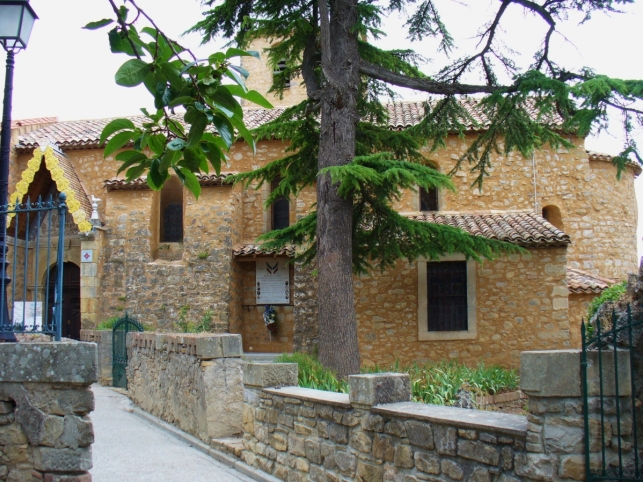An ancient French church, whose former priest's name was used for a character by the bestselling author Dan Brown in The Da Vinci Code, has been targeted by seekers of a mythical treasure trove mentioned in several other books.
Not for the first time, a hole has appeared by the Church of Saint Mary Magdalene in Rennes-le-Château, a village with a population of only 70. This is because a story that a priest buried a trove of gold coins and gems there at the end of the 19th century has spread across France.

The Telegraph reported that the village, near Carcassonne, 55 miles southeast of the southern city of Toulouse, became a magnet for treasure-hunters after books recounted various versions of the myth.
The mayor there was forced to ban unauthorised digging as far back as 1960 after complaints that Rennes-le-Château was beginning to look 'like a Swiss cheese'.
The priest, François-Bérenger Saunière, is credited with a role in the conspiracy theories behind The Da Vinci Code, a novel based on the fictional idea that Jesus had children and a relationship with Mary Magdalene. One of the novel's main characters, Jacques Saunière, is named after the priest.
The Telegraph reported that fewer treasure-hunters have been sighted in the village in recent years, but the new hole has raised fears that it is being targeted again.
A local deputy mayor, Marcel Captier, said: 'We don't want to find ourselves with swarms of treasure-hunters again.'
But Hélène Calmedero, who runs the local bookshop, 'Au Rendez-Vous des Chercheurs' (The Seekers' Rendez-Vous), said she would welcome the treasure-seekers back.
'I miss those days. The treasure-hunters were all like big children, excited about their searches. They carried on day and night, following up the vaguest hunch with metal detectors,' she said.
According to one version of the myth, Saunière discovered treasure buried by the Bishop of Alet as he fled to Spain during the French Revolution.
Saunière renovated the church, which dates from the 10th or 11th century, with some believing that the priest himself buried what was left in the church grounds or graveyard.
But most historians have concluded that the treasure never existed and the priest raised money by stealing donations and charging for church services.
According to the Telegraph, he is also said to have had an affair with his housekeeper, with villagers recounting a story circulated after his death in 1917 that he was punished by being transformed into the stone figure of a horned devil supporting a basin in the church.
Last year, a young woman wearing a Venetian mask damaged the sculpture by attacking it with an axe. She was given a suspended prison sentence for vandalism.
'That awakened bad memories,' Captier said. 'It's all very traumatic.'









